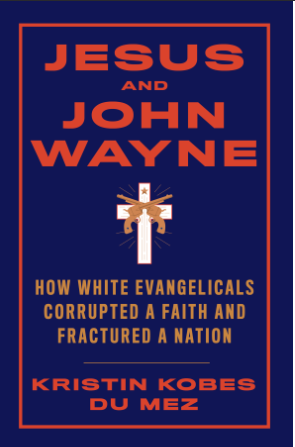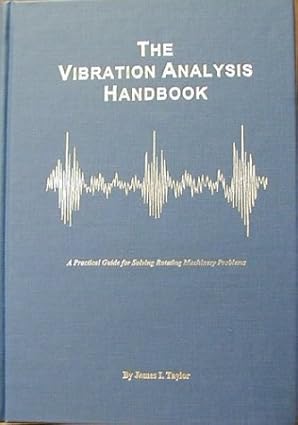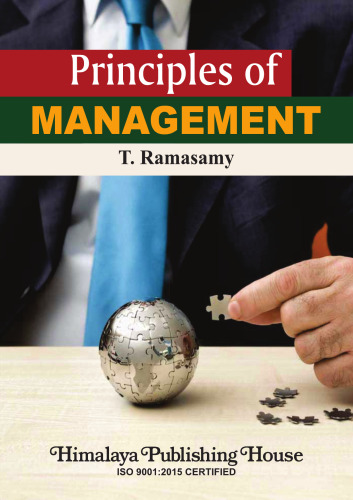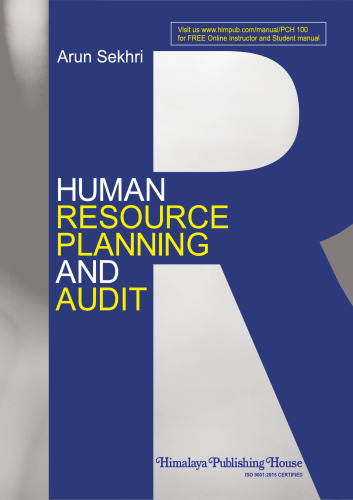model of masculinity, and fundamentalists and newly branded evangelicals, many of whom had never entirely abandoned the older muscular Christianity, joined the fray. Tellingly, when it came to the tactics of total war employed by the US military, it was liberal Protestants—many still chastened by the First World War—who expressed reservations. Ockenga, on the other hand, defended the firebombing of German cities in the pages of the New York Times. Evangelicals relished this role reversal, and their newfound patriotism and militarism would help them overcome their reputation as extremists and their marginal status.18 . Billy Graham speaking at a Youth for Christ rally in Grand Rapids, Michigan, in September 1947. COURTESY OF THE BILLY GRAHAM CENTER ARCHIVES, WHEATON COLLEGE, WHEATON, ILLINOIS. Even as they supported the war against totalitarianism, many evangelicals nonetheless harbored doubts about the US military. Through the 1940s and into the 1950s, most evangelicals saw the military as a place of moral corruption for young men. Contrary to later myths about “the good war” and “the greatest generation,” the military was known as an institution where drunkenness, vulgarity, gambling, and sexual disease abounded. (In 1945, when President Truman proposed universal military training for males over the age of eighteen, evangelical churches resisted, concerned about what would happen to men “removed from home and church influences” and “subjected to the temptations for which military training camps are notorious.”)19 No font of virtue, the military became for evangelicals a mission field, ripe for harvest. Through organizations like the Navigators, the Officers’ Christian Fellowship, the Overseas Christian Servicemen’s Centers, and the Christian Military Fellowship, evangelicals stepped up to address the moral shortcomings of the nation’s soldiers. The military, which had its own reasons to be concerned about the discipline and moral vitality of its forces, welcomed the work of evangelical organizations. It was the beginning of a long and mutually beneficial relationship.20 Graham cut his teeth as a revivalist during the Second World War. As the first paid evangelist for Youth for Christ, he worked both to evangelize the nation’s youth and to craft heroic Christian citizens who could promote Christianity and democracy at home and abroad. YFC rallies featured patriotic hymns, color guards, and veterans’ testimonies, and Graham preached a gospel of heroic Christian nationalism with unparalleled passion. By the end of the war, he had emerged as one of evangelicalism’s rising stars.21 IN THE FALL OF 1949, however, Graham’s future was uncertain. Harboring doubts about the authority of the Bible, he began to question whether God might be calling him to a different path. It was on a particularly dark night of the soul that Graham, open Bible before him, resolved to set his intellectual difficulties aside and surrender completely to the authority of God’s Word. He later recalled waking up with a renewed sense of purpose as he prepared for his upcoming visit to Los Angeles, refreshed with a vision that “something unusual was going to happen” there. What happened next did seem nothing short of miraculous. Two factors contributed to the unprecedented success of Graham’s LA crusade: the looming threat of nuclear annihilation and the conversion of a celebrity cowboy. The Lord worked in mysterious ways.22 Two days before the opening of Graham’s revival, President Truman announced that Russia had successfully tested an atomic bomb. Imminent destruction suddenly seemed a very real possibility, which suited the revivalist’s message just fine. With an urgent call for repentance, Graham brought the residents of Los Angeles to their knees: “Communism is a religion that is inspired, directed and motivated by the Devil himself who had declared war against Almighty God,” he inveighed. In this war it was clear that America was on God’s side, but it was time that Americans started acting like it. Their city was third on the list of Soviet targets, he warned, not because of its strategic significance but because of its reputation as a “city of wickedness and sin”—a city plagued by crime, drinking, rampant sexual immorality, and the dissolution of marriages. As an evangelist to America’s youth, Graham hadn’t shied away from addressing the younger generation’s lax sexual morality, but in Cold War America the stakes suddenly seemed higher. With greatness thrust upon the nation, it was imperative that the nation’s citizens also pursue goodness. A strong nation was a virtuous one; sexual morality was an issue of national significance.23 For Graham, the stability of the home was key to both morality and security: “A nation is only as strong as her homes.” In the evangelical worldview, Satan and the communists were united in an effort to destroy the American home. And for Graham, a properly ordered family was a patriarchal one. Because Graham believed that God had cursed women to be under man’s rule, he believed that wives must submit to husbands’ authority. Graham acknowledged that this would come as a shock to certain “dictatorial wives,” and he didn’t hesitate to offer Christian housewives helpful tips: When a husband comes home from work, run out and kiss him. “Give him love at any cost. Cultivate modesty and the delicacy of youth. Be attractive.” Keep a clean house and don’t “nag and complain all the time.” He had advice for men, too. A man was “God’s representative”—the spiritual head of household, “the protector” and “provider of the home.” Also, husbands should remember to give wives a box of candy from time to time, or an orchid. Or maybe roses.24 Not all evangelicals in Graham’s day embraced such patriarchal teachings. Some believed Christ’s atonement had nullified any “curse” placed on Eve in the Book of Genesis, opening the way to egalitarian gender roles; in the late nineteenth and early twentieth centuries, evangelicals in this tradition had been enthusiastic proponents of women’s rights. Graham’s patriarchal interpretation reflected the more reactionary tendencies of early-twentieth-century fundamentalism. He added a new twist, however, by wedding patriarchal gender roles to a rising Christian nationalism. In the late 1940s, there was nothing altogether unique about Graham’s instructions to husbands and wives. Many other Americans, too, celebrated “traditional” gender roles in Cold War America. The communist threat positioned women and men in distinct ways; men were to provide for their families and defend the nation, while women were deemed vulnerable and in need of protection. In this way, Cold War masculinity was intimately connected to militarism, to the point that they could seem inseparable. In the fall of 1949, then, Graham’s message resonated within and beyond the evangelical fold. But it wasn’t until the conversion of one of the city’s most famous latter-day cowboys that Graham’s revival would take hold in a way that would set the evangelist on course to become one of the most influential figures in the twentieth century.25 When Graham arrived in LA, the little-known thirty-three-year-old revivalist caught the eye of Stuart Hamblen, the hard-drinking “cowboy singer.” One of Hamblen’s biggest hits, “(I Won’t Go Huntin’, Jake) But I’ll Go Chasin’ Women,” had released that year. The prodigal son of a Methodist minister, Hamblen was also a champion rodeo rider who dabbled in Westerns, often playing the heavy. Hamblen bonded with Graham over their shared southern upbringing and agreed to promote Graham’s revival on his country music radio show. After showing up at Graham’s services, the celebrity cowboy got religion. Hamblen’s conversion sparked a string of celebrity conversions, electrifying the city. As word spread, the national media keyed in on what was happening and in turn helped “puff Graham,” giving his ministry celebrity coverage.26 That a celebrity cowboy in the heart of LA would help propel postwar evangelicalism as a religious and cultural movement is not as odd as it may sound. During the middle decades of the twentieth century, millions of southern evangelicals migrated to southern California and other Sunbelt locations. Lured by plentiful work in the burgeoning Cold War defense industry, they brought with them their distinctive faith—one shaped by a combative posture and an absolute certainty in the “inerrant” truths of the Bible, but also marked by an eagerness to experiment with new ways of communicating their uncompromising beliefs. All this unfolded in the shadow of Hollywood, the heartland of American celebrity culture and the crucible of American mythmaking.27 The myth of the American cowboy resonated powerfully with Sunbelt evangelicals. A model of rugged individualism that dovetailed with the individualism inherent within evangelicalism itself, the cowboy embodied a quintessentially American notion of frontier freedom coupled with an aura of righteous authority. Signifying an earlier era of American manhood, a time when heroic (white) men enforced order, protected the vulnerable, and wielded their power without apology, the myth of the American cowboy had been tinged with nostalgia from its inception. Half a century later, this nostalgia would be channeled into a powerful new religious and cultural identity, an identity harnessed for political ends. As a born-again Christian, Hamblen put aside his drinking, smoking, and gambling, but not his career as a country-western singer. At the prompting of his friend and fellow celebrity cowboy John Wayne, he wrote a song about his conversion, “It Is No Secret (What God Can Do),” and he featured a mix of religious and country songs on his radio show, The Cowboy Church of the Air. Hamblen’s religious songs focused on the darker side of the Christian story, especially God’s wrath; the rugged, even reckless masculinity of his country-western ballads went hand in hand with his born-again Christianity. Blurring the line between sacred and secular, Hamblen was in many ways a harbinger of a new era of American evangelicalism.28 Hamblen wasn’t alone in bridging the religious and mainstream entertainment industry. During the postwar years southern California became home to a vibrant local music scene where Southern Baptists and Pentecostals set aside denominational distinctions to sing along to the latest hits. Pat Boone was perhaps their greatest crossover celebrity; with roots in the Church of Christ and a lineage that could be traced back to Daniel Boone, he became one of pop music’s all-time greats. Second only to Elvis Presley in his day, Pat Boone was the pride and joy of postwar evangelicals.29 Boone wasn’t a revivalist, but he fit well with postwar evangelicals’ efforts to expand their reach through modern media. In accord with Ockenga’s plan—and with Graham as their lodestar—evangelicals began to fashion a vibrant media empire, along with a national network of institutions and parachurch organizations that flourished outside of denominational structures. Graham himself published two dozen books, and in 1956 he helped found Christianity Today, the flagship magazine of American evangelicalism. Nearly 700 stations carried his radio program across the nation and around the world. He helped evangelists Robert Schuller and James Robison get their start, and he lent his support to other evangelical organizations and institutions, including Wheaton College, Fuller Seminary, the National Religious Broadcasters, the NAE, Campus Crusade for Christ, Young Life, and Fellowship of Christian Athletes. All this was only a fraction of an emerging evangelical infrastructure that would come to support a vibrant religious consumer culture. Assisted by an expanding postwar economy, entrepreneurial evangelicals would bring Ockenga’s vision to fruition.30 Evangelical books began to roll off the presses, ready to be distributed across the country through the newly organized Christian Booksellers Association (CBA). Earlier in the century, religious publishing houses had marketed their wares primarily to church leaders, a practice shaped largely by problems of distribution. For much of American history, bookstores were only profitable in larger urban centers; to reach other consumers, publishers worked through denominational distribution systems or resorted to door-to-door sales or mail order. All of this changed with the establishment of the CBA. In a booming economy buoyed by readily available credit, a loan and a CBA catalog were all that was needed to start a Christian bookstore. In 1950, when the CBA first organized, there were about 270 affiliated stores; by the mid-1960s there were 725, and by the end of the 1970s there were around 3000 scattered in small towns and cities across the country.31 The CBA solved the distribution problem, but it also changed the market—and the publishing industry feeding that market. With a broader Christian market replacing denominational distribution channels, authors and publishers needed to tone down theological distinctives and instead offer books pitched to a broadly evangelical readership. Books on “Christian living” achieved this goal without offending denominational Wayne became one of Hollywood’s biggest stars by embodying— defining, really—the heroic cowboy-soldier that captivated audiences in the early Cold War era. Wayne’s breakout moment came in 1948, just as Cold War tensions eclipsed any sense of postwar peace. That year he starred in two Westerns: Red River, in which he played the role of a cattle rancher whose love interest was slaughtered by Indians, and Fort Apache, in which he played a Civil War captain who went on to subdue the Apache on the Western frontier. Reminiscent of the days of Theodore Roosevelt, Cold War Americans once again found themselves trading isolationism for a new imperialism—this time expanding the free market at home and abroad. Combining resurgent nationalism with moral exceptionalism, Americans divided the world into good guys and bad guys, and the Western offered a morality tale perfectly suited to the moment, one in which the rugged hero resorted to violence to save the da
چکیده فارسی
الگوی مردانگی، و بنیادگراها و انجیلیهای جدید که بسیاری از آنها هرگز مسیحیت عضلانی قدیمیتر را به کلی کنار نگذاشته بودند، به مبارزه پیوستند. واضح است که وقتی صحبت از تاکتیک های جنگ تمام عیار به کار گرفته شده توسط ارتش ایالات متحده شد، این پروتستان های لیبرال - که هنوز بسیاری از آنها در جنگ جهانی اول تنبیه شده بودند - بودند که نسبت به آنها ابراز نگرانی کردند. از سوی دیگر اوکنگا در صفحات نیویورک تایمز از بمباران شهرهای آلمان دفاع کرد. انجیلی ها از این تغییر نقش لذت می بردند و میهن پرستی و نظامی گری تازه یافته آنها به آنها کمک می کرد بر شهرت خود به عنوان افراط گرا و موقعیت حاشیه ای خود غلبه کنند. بیلی گراهام در حال سخنرانی در گردهمایی جوانان برای مسیح در گراند راپیدز، میشیگان، در سپتامبر 1947. با اجازه از بایگانی مرکز بیلی گراهام، کالج ویتون، ویتون، ایلینویز. با وجود اینکه بسیاری از انجیلی ها از جنگ علیه توتالیتاریسم حمایت می کردند، با این وجود در مورد ارتش ایالات متحده تردید داشتند. در طول دهه 1940 و تا دهه 1950، بیشتر انجیلی ها ارتش را محلی برای فساد اخلاقی برای مردان جوان می دانستند. برخلاف افسانههای بعدی درباره «جنگ خوب» و «بزرگترین نسل»، ارتش به عنوان نهادی شناخته میشد که در آن مستی، ابتذال، قمار و بیماریهای جنسی فراوان بود. (در سال 1945، زمانی که پرزیدنت ترومن آموزش نظامی جهانی را برای مردان بالای هجده سال پیشنهاد کرد، کلیساهای انجیلی با نگرانی در مورد آنچه که برای مردانی که «از خانه و تأثیرات کلیسا حذف شدهاند» و «معرض وسوسههایی که اردوگاههای آموزشی نظامی برای آنها هستند، چه خواهد شد، مقاومت کردند». بدنام.») 19 بدون هیچ گونه فضیلت، ارتش برای انجیلی ها به یک میدان مأموریت تبدیل شد که برای برداشت محصول آماده بود. از طریق سازمانهایی مانند ناوبرها، انجمن مسیحی افسران، مراکز خدمات مسیحی خارج از کشور، و انجمن نظامی مسیحی، انجیلیها برای رسیدگی به کاستیهای اخلاقی سربازان کشور قدم برداشتند. ارتش که دلایل خاص خود را برای نگرانی از نظم و نشاط اخلاقی نیروهای خود داشت، از کار سازمان های انجیلی استقبال کرد. این آغاز یک رابطه طولانی و دوجانبه سودمند بود. گراهام به عنوان یک احیاگر در طول جنگ جهانی دوم دندان های خود را برید. او به عنوان اولین مبشر با حقوق جوانان برای مسیح، هم برای بشارت دادن به جوانان ملت و هم برای ساختن شهروندان مسیحی قهرمان که می توانستند مسیحیت و دموکراسی را در داخل و خارج از کشور ترویج کنند، کار کرد. راهپیماییهای YFC سرودهای میهنپرستانه، نگهبانان رنگ و شهادت جانبازان را به نمایش گذاشت و گراهام انجیلی از ناسیونالیسم قهرمانانه مسیحی را با اشتیاق بینظیر موعظه کرد. در پایان جنگ، او به عنوان یکی از ستارگان در حال ظهور انجیلیسم ظاهر شد. با این حال، در پاییز 1949، آینده گراهام نامشخص بود. او با داشتن شک و تردید در مورد اعتبار کتاب مقدس، شروع به این سوال کرد که آیا ممکن است خدا او را به مسیر دیگری دعوت کند. در یک شب تاریک روحی بود که گراهام، کتاب مقدس را پیش روی او باز کرد، تصمیم گرفت مشکلات فکری خود را کنار بگذارد و کاملاً تسلیم اقتدار کلام خدا شود. او بعداً به یاد آورد که در حالی که برای سفر آتی خود به لس آنجلس آماده می شد، با یک حس تازه از خواب بیدار شد و با این تصور که "چیزی غیرعادی قرار است در آنجا اتفاق بیفتد" سرحال بود. آنچه بعد اتفاق افتاد، چیزی جز معجزه به نظر نمی رسید. دو عامل در موفقیت بیسابقه جنگ صلیبی گراهام در لسآنجلس نقش داشتند: تهدید احتمالی نابودی هستهای و تبدیل شدن یک کابوی مشهور. خداوند به روشهای مرموزی کار میکرد. دو روز قبل از افتتاحیه احیای گراهام، رئیس جمهور ترومن اعلام کرد که روسیه یک بمب اتمی را با موفقیت آزمایش کرده است. ویرانی قریب الوقوع ناگهان یک امکان بسیار واقعی به نظر می رسید، که به خوبی با پیام احیاگر مطابقت داشت. گراهام با یک فراخوان فوری برای توبه، ساکنان لس آنجلس را به زانو درآورد: «کمونیسم دینی است که الهام گرفته، هدایت و انگیزه آن را خود شیطان که علیه خدای متعال اعلام جنگ کرده بود، است. در این جنگ مشخص بود که آمریکا در کنار خداست، اما زمان آن رسیده بود که آمریکاییها مانند آن رفتار کنند. او هشدار داد که شهر آنها در فهرست اهداف اتحاد جماهیر شوروی سوم است، نه به دلیل اهمیت استراتژیک، بلکه به دلیل شهرتش به عنوان "شهر شرارت و گناه" - شهری که گرفتار جنایت، مشروبات الکلی، بداخلاقی های جنسی گسترده و انحلال است. از ازدواج ها گراهام به عنوان مبشر جوانان آمریکا از پرداختن به اخلاق سست جنسی نسل جوان طفره نرفت، اما در آمریکای جنگ سرد ناگهان خطرات بیشتر به نظر می رسید. با عظمتی که بر ملت تحمیل شده است، ضروری بود که شهروندان ملت نیز به دنبال خیر باشند. یک ملت قوی، یک ملت با فضیلت بود. اخلاق جنسی موضوعی با اهمیت ملی بود.23 برای گراهام، ثبات خانه کلیدی برای اخلاق و امنیت بود: «یک ملت فقط به اندازه خانههایش قوی است». در جهان بینی انجیلی، شیطان و کمونیست ها در تلاش برای تخریب خانه آمریکایی متحد شدند. و برای گراهام، خانواده ای که به درستی منظم شده بود، خانواده ای پدرسالار بود. از آنجا که گراهام معتقد بود که خداوند زنان را لعنت کرده است که تحت حاکمیت مرد باشند، او معتقد بود که زنان باید تسلیم اقتدار شوهر شوند. گراهام اذعان داشت که این امر برای برخی از «همسران دیکتاتوری» شوکه کننده خواهد بود، و از ارائه نکات مفید به زنان خانه دار مسیحی دریغ نکرد: وقتی شوهری از سر کار به خانه می آید، فرار کنید و او را ببوسید. «به هر قیمتی شده به او عشق بدهید. حیا و ظرافت جوانی را پرورش دهید. جذاب باش.» یک خانه تمیز نگه دارید و همیشه "نق نق زدن و شکایت" نکنید. او برای مردان هم توصیه هایی داشت. مردی «نماینده خدا» بود - رئیس روحانی خانواده، «حافظ» و «تامین کننده خانه». همچنین، شوهران باید به خاطر داشته باشند که هر از گاهی یک جعبه آب نبات یا یک گل ارکیده به همسرشان بدهند. یا شاید گل سرخ.24 همه انجیلیان در زمان گراهام چنین آموزه های پدرسالارانه را پذیرفتند. برخی بر این باور بودند که کفاره مسیح هرگونه «لعنتی» را که در کتاب پیدایش بر حوا گذاشته شده بود باطل کرده است و راه را برای نقشهای جنسیتی برابر باز میکند. در اواخر قرن نوزدهم و اوایل قرن بیستم، انجیلیان در این سنت از طرفداران مشتاق حقوق زنان بودند. تفسیر پدرسالارانه گراهام منعکس کننده گرایش های ارتجاعی تر بنیادگرایی اوایل قرن بیستم بود. با این حال، او با نقش های جنسیتی پدرسالارانه عروسی، پیچش جدیدی به ناسیونالیسم مسیحی رو به رشد اضافه کرد. در اواخر دهه 1940، هیچ چیز منحصر به فردی در مورد دستورات گراهام به زن و شوهر وجود نداشت. بسیاری از آمریکاییهای دیگر نیز نقشهای جنسیتی «سنتی» را در آمریکای جنگ سرد جشن گرفتند. تهدید کمونیستی زنان و مردان را به شیوههای متفاوتی قرار داد. مردان باید خانواده خود را تأمین می کردند و از کشور دفاع می کردند، در حالی که زنان آسیب پذیر و نیازمند حمایت تلقی می شدند. به این ترتیب، مردانگی دوران جنگ سرد ارتباط نزدیکی با نظامی گری داشت، تا جایی که می توانستند جدایی ناپذیر به نظر برسند. پس از آن، در پاییز 1949، پیام گراهام در درون و فراسوی گروه انجیلی طنین انداز شد. اما تا زمانی که یکی از معروفترین گاوچرانهای روز آخر شهر تغییر دین داد، احیای گراهام به گونهای بود که انجیل را در مسیر تبدیل شدن به یکی از تأثیرگذارترین چهرههای قرن بیستم قرار داد. گراهام وارد لس آنجلس شد، احیاگر کمتر شناخته شده سی و سه ساله چشم استوارت همبلن، «خواننده گاوچران» را به خود جلب کرد. یکی از بزرگترین موفقیت های همبلن، "(I Won't Go Huntin', Jake) But I'll Go Chasin' Women" در آن سال منتشر شد. هامبلن، پسر ولخرج یک وزیر متدیست، همچنین یک قهرمان رودئوسوار بود که در وسترن فعالیت می کرد و غالباً سنگین بازی می کرد. هامبلن با گراهام بر سر تربیت مشترکشان در جنوب پیوند خورد و موافقت کرد که احیای گراهام را در برنامه رادیویی موسیقی کانتری اش تبلیغ کند. پس از حضور در خدمات گراهام، گاوچران مشهور دین گرفت. تغییر مذهب هامبلن جرقه ای از تبدیل افراد مشهور را به وجود آورد و شهر را برق انداخت. همانطور که اخبار منتشر شد، رسانه ملی به آنچه در حال رخ دادن بود را کلید زد و به نوبه خود به «پف کردن گراهام» کمک کرد، و پوشش مشاهیر وزارت او را پوشش داد.26 اینکه یک گاوچران مشهور در قلب لس آنجلس به پیشبرد انجیلییسم پس از جنگ به عنوان یک جنبش مذهبی و فرهنگی کمک می کند. آنقدرها هم که ممکن است عجیب به نظر برسد نیست در طول دهههای میانی قرن بیستم، میلیونها انجیلی جنوبی به جنوب کالیفرنیا و سایر مکانهای Sunbelt مهاجرت کردند. آنها که با کار فراوان در صنعت دفاعی در حال رشد جنگ سرد فریفته شدند، ایمان متمایز خود را با خود آوردند - ایمانی که با حالت جنگی و اطمینان مطلق در حقایق "غیر اشتباه" کتاب مقدس شکل گرفت، اما همچنین با اشتیاق برای آزمایش چیزهای جدید مشخص شد. راه های ارتباط با باورهای سازش ناپذیرشان همه اینها در سایه هالیوود، مرکز فرهنگ سلبریتی آمریکایی و بوته اسطوره سازی آمریکایی آشکار شد. اسطوره گاوچران آمریکایی به شدت در میان انجیلی های Sunbelt طنین انداز شد. مدلی از فردگرایی ناهموار که با فردگرایی ذاتی درون خود انجیلی همخوانی داشت، این گاوچران مفهومی اساسا آمریکایی از آزادی مرزی همراه با هاله ای از اقتدار صالح را تجسم بخشید. اسطوره گاوچران آمریکایی که نشان دهنده دوران پیشین مردانگی آمریکاست، زمانی که مردان قهرمان (سفیدپوست) نظم را اجرا می کردند، از افراد آسیب پذیر محافظت می کردند و بدون عذرخواهی از قدرت خود استفاده می کردند، اسطوره گاوچران آمریکایی از همان ابتدا با نوستالژی همراه بود. نیم قرن بعد، این نوستالژی به یک هویت مذهبی و فرهنگی قدرتمند جدید هدایت می شود، هویتی که برای اهداف سیاسی مهار می شود. هامبلن به عنوان یک مسیحی تازه متولد شده، نوشیدن، سیگار و قمار را کنار گذاشت، اما حرفه خود را به عنوان یک خواننده کانتری وسترن کنار گذاشت. به دستور دوست و همکار کابوی مشهورش جان وین، او ترانه ای در مورد تغییر مذهبش نوشت، "این راز نیست (چه خدا می تواند انجام دهد") و ترکیبی از آهنگ های مذهبی و کانتری را در برنامه رادیویی خود به نمایش گذاشت. کلیسای کابوی هوا. ترانه های مذهبی هامبلن بر جنبه های تاریک داستان مسیحی، به ویژه خشم خدا متمرکز بود. مردانگی خشن و حتی بی پروا تصنیف های وسترن کشور او دست در دست هم با مسیحیت زاده شده او پیش رفت. هامبلن که مرز بین مقدس و غیرمذهبی را محو می کند، از بسیاری جهات منادی عصر جدیدی از انجیلییسم آمریکایی بود. هامبلن تنها در پل زدن صنعت سرگرمی مذهبی و جریان اصلی نبود. در طول سالهای پس از جنگ، کالیفرنیای جنوبی به خانه یک صحنه موسیقی محلی پر جنب و جوش تبدیل شد که در آن باپتیستهای جنوبی و پنطیکاستیها تمایزات فرقهای را کنار گذاشتند تا در کنار آخرین آهنگهای موفق آواز بخوانند. پت بون شاید بزرگترین شخصیت متقاطع آنها بود. با ریشه در کلیسای مسیح و نسب آن به دانیل بون، او به یکی از بزرگان موسیقی پاپ تبدیل شد. پس از الویس پریسلی در زمان خود، پت بون مایه غرور و شادی انجیلیان پس از جنگ بود. 29 بون یک احیاگر نبود، اما با تلاش های انجیلی های پس از جنگ برای گسترش دسترسی خود از طریق رسانه های مدرن به خوبی مطابقت داشت. مطابق با نقشه اوکنگا - و با گراهام به عنوان ستاره اصلی آنها - انجیلی ها شروع به ایجاد یک امپراتوری رسانه ای پر جنب و جوش، همراه با شبکه ای ملی از نهادها و سازمان های پاراکلیسا کردند که خارج از ساختارهای فرقه ای شکوفا شدند. خود گراهام دو دوجین کتاب منتشر کرد و در سال 1956 به تأسیس مسیحیت امروز، مجله شاخص انجیلییسم آمریکایی کمک کرد. نزدیک به 700 ایستگاه برنامه رادیویی او را در سراسر کشور و سراسر جهان پخش کردند. او به انجیلیان رابرت شولر و جیمز رابیسون کمک کرد تا شروع کنند و از دیگر سازمانها و موسسات انجیلی، از جمله کالج ویتون، حوزه علمیه فولر، پخشکنندههای ملی مذهبی، NAE، جنگ صلیبی پردیس برای مسیح، زندگی جوان، و انجمن حمایت کرد. ورزشکاران مسیحی همه اینها تنها کسری از زیرساخت های انجیلی در حال ظهور بود که از فرهنگ مصرف کننده مذهبی پر جنب و جوش حمایت می کرد. با کمک اقتصاد رو به گسترش پس از جنگ، انجیلیان کارآفرین چشم انداز اوکنگا را به ثمر رساندند. 30 کتاب های انجیلی شروع به انتشار در مطبوعات کردند و آماده توزیع در سراسر کشور از طریق انجمن تازه سازمان یافته کتابفروشان مسیحی (CBA) بودند. در اوایل قرن، مؤسسات انتشاراتی مذهبی کالاهای خود را عمدتاً برای رهبران کلیسا به بازار عرضه میکردند، رویهای که عمدتاً ناشی از مشکلات توزیع بود. در بیشتر تاریخ آمریکا، کتابفروشی ها فقط در مراکز شهری بزرگتر سودآور بودند. برای دسترسی به سایر مصرف کنندگان، ناشران از طریق سیستم های توزیع فرقه ای کار می کردند یا به فروش خانه به خانه یا سفارش پستی متوسل می شدند. همه اینها با تأسیس CBA تغییر کرد. در یک اقتصاد پر رونق که با اعتبار آسان در دسترس بود، یک وام و یک کاتالوگ CBA تمام چیزی بود که برای راه اندازی یک کتابفروشی مسیحی نیاز بود. در سال 1950، زمانی که CBA برای اولین بار سازماندهی شد، حدود 270 فروشگاه وابسته وجود داشت. در اواسط دهه 1960 تعداد 725 نفر و در پایان دهه 1970 حدود 3000 نفر در شهرهای کوچک و شهرهای سراسر کشور پراکنده بودند. آن بازار با توجه به اینکه بازار مسیحی گستردهتر جایگزین کانالهای توزیع فرقهای میشود، نویسندگان و ناشران باید تمایزات الهیاتی را کاهش داده و در عوض کتابهایی را به خوانندگان انجیلی عرضه کنند. کتابهای مربوط به «زندگی مسیحی» بدون توهین به فرقهها به این هدف دست یافتند وین با تجسم - تعریف، واقعاً - سرباز گاوچران قهرمان که مخاطبان را در اوایل دوران جنگ سرد مجذوب خود کرد، به یکی از بزرگترین ستارههای هالیوود تبدیل شد. لحظه شکست وین در سال 1948 فرا رسید، درست زمانی که تنش های جنگ سرد هرگونه احساس صلح پس از جنگ را تحت الشعاع قرار داد. در آن سال او در دو فیلم وسترن بازی کرد: رودخانه سرخ، که در آن نقش یک دامدار گاوداری را بازی کرد که علاقه عشقش توسط سرخپوستان سلاخی شد، و فورت آپاچی، که در آن نقش کاپیتان جنگ داخلی را بازی کرد که در ادامه آپاچی ها را تحت سلطه خود درآورد. مرز غربی یادآور روزهای تئودور روزولت، آمریکاییهای جنگ سرد بار دیگر متوجه شدند که انزواطلبی را با امپریالیسم جدید معامله میکنند – این بار در حال گسترش بازار آزاد در داخل و خارج از کشور. آمریکاییها با ترکیب ناسیونالیسم احیاگر با استثناگرایی اخلاقی، جهان را به آدمهای خوب و بد تقسیم کردند و غربیها داستانی اخلاقی را ارائه کردند که کاملاً مناسب زمان حال بود، داستانی که در آن قهرمان خشن برای نجات دا
به خشونت متوسل شد.
ادامه ...
بستن ...




![Our mission to the court of Marocco [Morocco] in 1880, under Sir John Drummond Hay - pdf Our mission to the court of Marocco [Morocco] in 1880, under Sir John Drummond Hay - pdf](https://dl.libsan.ir/images/1/12/112108724_694b9e9769312.jpg)





